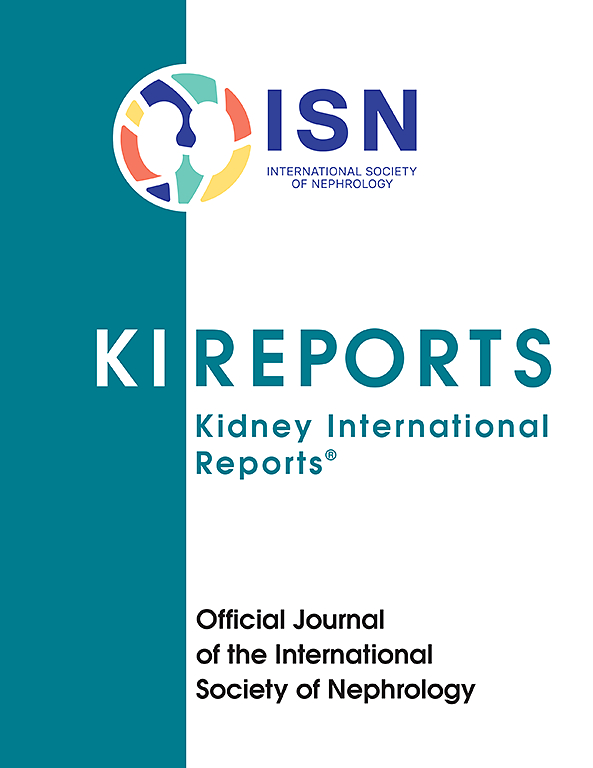Acceptance of High Kidney Donor Profile Index Kidneys Among Consented Candidates
IF 5.7
2区 医学
Q1 UROLOGY & NEPHROLOGY
引用次数: 0
Abstract
Introduction
The Kidney Donor Profile Index (KDPI) is a percentile score based on the relative risk of allograft failure for deceased donor kidneys, where higher scores indicate shorter estimated allograft longevity. The Organ Procurement and Transplantation Network policy requires patients to proactively opt-in via written consent to receive offers for “high-KDPI” (> 85%) kidneys before being considered for organs in this category.
Methods
This retrospective cohort study examined United States (US) candidates and recipients from 2012 to 2022 to determine if consent for less-than-ideal organs impacted organ allocation, efficiency, and utilization.
Results
Among 138,242 deceased donor transplants, 7031 (5%) were from KDPI of 80% to 85% kidneys, 4847 (4%) from KDPI of 86% to 90% kidneys, and 6089 (4%) from KDPI > 90%. Among transplants with KDPI of 86% to 90% kidneys, representing the best quality among high-KDPI organs, 10% of recipients in 2014 were top-ranked candidates compared with 5% in 2015 and 4% in 2022. The number of declined offers for KDPI of 86% to 90% kidneys increased following implementation of the Kidney Allocation System (11 [interquartile range, IQR: 2–52] in 2014 versus 21.5 [IQR: 6–109] in 2015 vs. 52 [IQR: 12–323] in 2022).
Conclusion
These findings demonstrate changes in the centers’ willingness to accept high KDPI kidneys on behalf of their patients after the introduction of the KDPI label and other changes in allocation policy and regulatory oversight in the system.

在同意的候选人中接受高肾供者概况指数肾脏
肾脏供体概况指数(KDPI)是基于已故供体肾脏移植失败的相对风险的百分位数评分,分数越高表明估计的同种异体移植寿命越短。器官获取和移植网络政策要求患者在考虑这类器官之前,通过书面同意主动选择接受“高kdpi”(85%)肾脏的报价。方法本回顾性队列研究调查了2012年至2022年美国(US)的候选者和受者,以确定不理想器官的同意是否影响器官分配、效率和利用。结果138242例死亡供肾移植中,KDPI为80% ~ 85%的7031例(5%),KDPI为86% ~ 90%的4847例(4%),KDPI为90%的6089例(4%)。在KDPI为86%至90%的肾脏移植中,2014年有10%的接受者是排名最高的候选人,而2015年为5%,2022年为4%。实施肾脏分配制度后,KDPI比例为86%至90%的肾脏被拒绝的数量有所增加(2014年为11[四分位数范围,IQR: 2-52], 2015年为21.5[四分位数范围,IQR: 6-109], 2022年为52 [IQR: 12-323])。这些发现表明,在引入KDPI标签以及系统中分配政策和监管监督的其他变化后,中心代表患者接受高KDPI肾脏的意愿发生了变化。
本文章由计算机程序翻译,如有差异,请以英文原文为准。
求助全文
约1分钟内获得全文
求助全文
来源期刊

Kidney International Reports
Medicine-Nephrology
CiteScore
7.70
自引率
3.30%
发文量
1578
审稿时长
8 weeks
期刊介绍:
Kidney International Reports, an official journal of the International Society of Nephrology, is a peer-reviewed, open access journal devoted to the publication of leading research and developments related to kidney disease. With the primary aim of contributing to improved care of patients with kidney disease, the journal will publish original clinical and select translational articles and educational content related to the pathogenesis, evaluation and management of acute and chronic kidney disease, end stage renal disease (including transplantation), acid-base, fluid and electrolyte disturbances and hypertension. Of particular interest are submissions related to clinical trials, epidemiology, systematic reviews (including meta-analyses) and outcomes research. The journal will also provide a platform for wider dissemination of national and regional guidelines as well as consensus meeting reports.
 求助内容:
求助内容: 应助结果提醒方式:
应助结果提醒方式:


